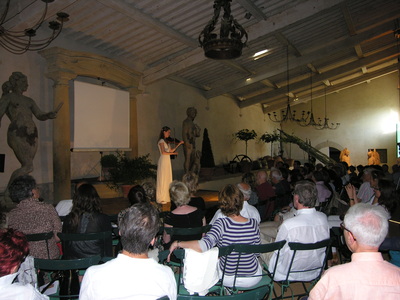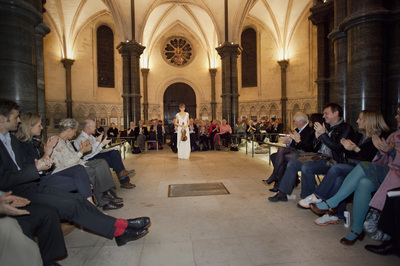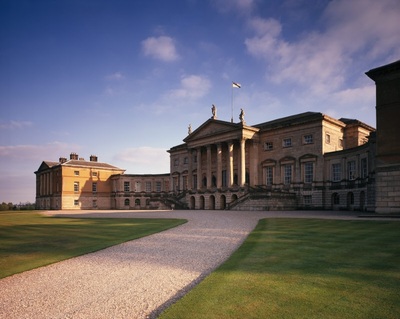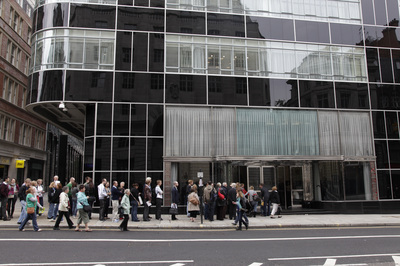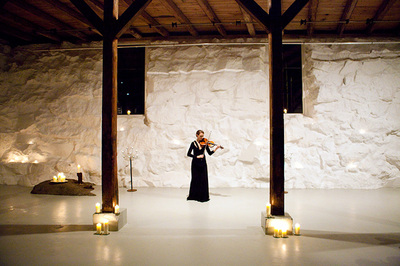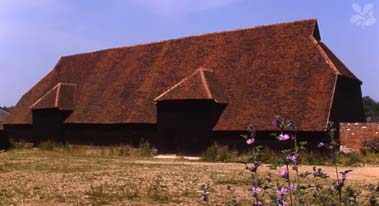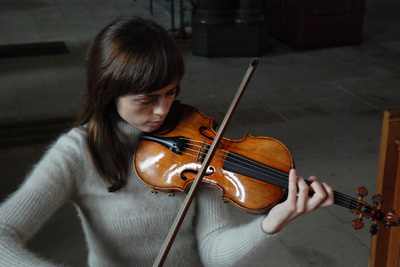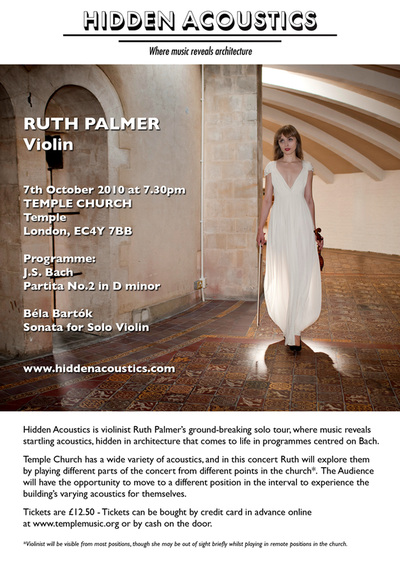|
IRR Outstanding Award International Record Review “Exquisitely poised” Independent on Sunday **** “Hugely impressive” The Guardian **** “Impeccable” BBC Music Magazine ***** "I was frankly surprised that everyone within earshot didnʼt rush the gates." Oxford Theatre Review “Palmer sends impeccable astringent Bartók and warm, profound Bach in search of the indefinable amid the lofty, ancient vaulting.” The Observer “Irresistible energy and drama . . . a great musical journey.” Metro Hidden Acoustics Review by Maira Seeley, Oxford Theatre Review, May 2011 The solemn fifteenth-century theologians who built the Bodleianʼs Divinity School might not have approved of violinist Ruth Palmerʼs exquisite concert there on Sunday night. After all, Bachʼs partitas were originally dance music, and dainty minuets are probably not the purpose those men imagined for the room. Palmer, however, chose the Divinity School and the adjoining Convocation House as perfect spaces for Bachʼs work in her concert series ʻHidden Acoustics: where music reveals architectureʼ, described as a ʻground-breaking solo tour, where music reveals startling acoustics, hidden in architecture that comes to life in programmes centred on Bachʼ. The acoustics revealed were startling: in the Bourree of Bachʼs Partita No. 3 in E Major, I had the strange sense that the arches themselves were singing, an impression I confirmed afterwards with Palmer. While the Divinity Schoolʼs acoustics worked well with the mellower Loure and Bourree of Partita No. 3, the energy of the Preludio was swallowed slightly by the echoes in the long room which dimmed its usual brightness. It wasnʼt exactly mushy, but the tiny lag time between the notes and their echoes dragged at the movementʼs liveliness. Interestingly, when Palmer used a mute in the second movement of Eugene Ysayeʼs Sonata No. 2, it seemed to give the sound far more definition, as though the mute somehow absorbed the conflicting echoes. After the interval, we moved into the Convocation House for all five movements of Partita No. 2 in D Minor. Perhaps it was the wood panelling on the walls, or maybe the smaller size of the room, but Palmerʼs sound was far clearer: the Corrente sounded precise and targeted, and every chord of the Ciaccona was bright and present. Palmerʼs movements seemed so delicate and effortless in the Sarabanda that it felt as though the perfect sound were coming from some otherworldly dimension. How could such small movements produce such tone? She seemed to simply allow the notes to emerge, without laborious vibrato, and the pure sound made it easy to imagine the original gut strings of Bachʼs day. It was a welcome contrast to Itzhak Perlmanʼs frenetic performance, which Iʼd listened to on Itunes while trying to pick up hints for my own attempts at Partita No. 2. Palmerʼs performance of the Ciaccona was the sweetest incarnation Iʼve heard yet, balancing huge chords with tiny, wondering comments from the tip of her bow, while upper and lower voices stayed distinct in the flowing whole. Palmer continued her theme of Bach in unusual places for the encore. In the Bodleianʼs quad, she braved the cold and faced the Earl of Pembroke for the Partita in G Minor. I was frankly surprised that everyone within earshot didnʼt rush the gates. Perhaps they were simply waiting for a warmer opportunity: Palmerʼs tour will continue in Kedleston Hall, Derbyshire on May 20th, as well as in Essex, at Calke Abbey, and at Chester Festivals. ʻHidden Acousticsʼ is clearly not to be missed. |
Gramophone Article on Hidden Acoustics by Charlotte Smith, January 2011
'Hidden Acoustics' marries fascinating architecture with glorious sounds. "If these walls could talk..." they would sing. Thus has the enterprising young violinist Ruth Palmer interpreted the well-known phrase. Her "Hidden Acoustics" tour, an offshoot from her recent disc of solo Bach and Bartok, explores the relationship between a musical performance and the building in which that performance is housed. For the venue is rarely, if ever, a passive witness to a musical event, but instead alters and enhances the sound. According to Palmer's theory, this symbiotic relationship can reveal as much about the architecture as it does the music. Armed with this idea, I made my way to Temple Church for the launch concert of both CD and tour. Protected in its own Oxbridge-like courtyard from the busy streets of London's law district this was a perfect location in which to intimately examine sound. Having recorded her album here, Palmer was clearly well acquainted with the church's assorted acoustics. We were treated to Bach's Partita No 2 and Bartok's Solo Violin Sonata from various aspects of the building, ranging from altar to pews to central rotunda - and the audience was invited in the interval to change seating positions as well. Certainly this made for an intense aural experience. That a single four-stringed instrument could produce by turns the most delicate and minimal sounds and a rich cacophony was in no small part down to Palmer's impressive facility. The church played its role well, too, proving a mercurial performance partner but a venerable one also, steeped as it is in 800 years of history. As a member of the audience I was acutely aware that any movement of my own would make its own indelible mark on the performance. This sense of inclusiveness has been fostered by Palmer in her quest to provide "memorable" concerts. "It's not so much about being different but about providing a significant experience for the audience," she says. "I want these concerts to create a sense of occasion and a building can really influence how an audience responds." It's a strategy that appears to be working, with sold-out concerts in venues as varied as Bath's Octagon Chapel and Florence's Villa La Pietra. "As well as working with English Heritage, Open House, National Trust and international festivals," Palmer continues, "the project is growing organically as members of the audience nominate venues they know and love." By encouraging an active engagement from her audience, Palmer can ensure a concentrated listening environment and an unforgettable concert experience - and one couldn't ask for more. |
Website photos: Tim Meara, National Trust, NYU.

